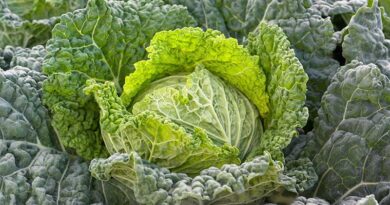Watch out for these five cabbage pests
27 January 2024, Burundi: Cabbage is a globally important vegetable crop. It serves as a valuable source of nutrition and income for local communities. With a wide range of varieties around the world – from Savoy to Bok Choy – it is an important component of many cuisines. Smallholder farmers often cultivate cabbage as a cash crop.
Like many other important agricultural crops, cabbage is susceptible to significant damage by plant pests. For smallholder farmers who lack access to reliable information and agricultural inputs, this can have a significant negative impact on yields.
In addition, climate change affects the prevalence and distribution of pests. Warmer temperatures and unpredictable rain patterns can affect the timing and severity of infestations. This can increase the challenges already faced by smallholder farmers.
Here are five pests that threaten cabbage cultivation.
Cabbage aphid (Brevicoryne brassicae)
Cabbage aphids are tiny insects measuring 2-2.5 mm. They have a greyish waxy coating that gives them a dusty, grey, or white appearance They are found in clusters of various colours from greenish to grey and black. They cause severe damage to crops like cabbage, cauliflower and radish. The aphids feed by extracting sap from their host plants, excreting sweet honeydew that attracts ants. In exchange, the ants protect aphids from natural enemies. Their feeding deforms leaves, leading to leaf curl, particularly in older plants. Prolonged feeding results in the plant yellowing, wilting, and stunting. These aphids can cause substantial yield losses.
Factsheet for farmers: Cabbage aphids
Cabbage white butterfly (Pieris rapae)
The cabbage butterfly is a notorious pest of cruciferous crops. The caterpillars devour leaves, stripping them down to their veins. Young larvae hatch on the outer leaves, causing superficial damage, leaving the upper leaf surface intact. As they mature, they create holes in the leaves, often chewing through small veins. The adult cabbage butterflies lay clusters of yellow eggs on the undersides of leaves, where the small larvae will feed on the tender leaf portions. In severe infestations, plants may be reduced to a skeleton, with all leaf tissue eaten. Attacks of this pest intensify in warmer temperatures.
Factsheet for farmers: Cabbage butterfly
Dark leaf spot of cabbage (Alternaria brassicicola)
Cabbage bacterial leaf spot, caused by the fungal pathogen, Alternaria brassicicola, is a prevalent foliar disease. It affects crops including cabbage, cauliflower, kale, brussels sprouts, and broccoli. Even minor infections can render crops unsellable. Severe cases lead to reduced yields because of leaf loss or low weight. The disease manifests as small dark spots on leaves, which may merge to form irregular dead areas limited by the leaf veins. Gradually, the entire foliage turns yellow and deteriorates. Thriving in damp conditions, the bacteria enter plants through any damage, even the minute, like sand blowing against the leaves. The bacteria rely on insects, rain splashes, or weeding tools to transport them.
Factsheet for Farmers: Cabbage Bacterial Leaf Spot
Diamondback moth (Plutella xylostella)
The diamondback moth is a global threat to cruciferous plants, including cabbage, broccoli, and cauliflower. Its voracious larvae cause severe damage by feeling on leaves, often rendering crops unmarketable. These small caterpillars reproduce rapidly, leading to multiple generations within one growing season. The larvae strip foliage down to the veins, which is especially harmful to seedlings. Adults lay eggs on the leaves, and upon hatching, the larvae start to consume the leaves. The larvae may also dangle from silk threads when disturbed. Even if the plant tissue damage is minimal, the mere presence of the larvae can result in the rejection of produce. This pest is a serious concern for growers worldwide.
Factsheet for Farmers: diamondback moth in cabbage
Cabbage root fly (Delia radicum)
Cabbage root fly maggots, which resemble common house flies, pose a threat to the roots of brassicas as well as swedes, turnips, and radishes, by burrowing into their roots. The legless, headless larvae can devastate seedlings and recently transplanted plants, creating entry points for disease-causing pathogens like blackleg and soft rot. Cold-season crops are particularly vulnerable, often displaying signs such as wilting, pale foliage, and stunted growth when affected by these destructive pests. To protect your cabbage crops, it’s essential to recognize and address infestations promptly.
Factsheet for farmers: Cabbage Maggot on Brassica
More on this: Pest and Disease Photoguide to Cabbage disorders.
Find information on pests and diseases on the PlantwisePlus Knowledge Bank.
PlantwisePlus Knowledge Bank
The PlantwisePlus Knowledge Bank is a free online resource that gathers plant health information from across the world. It contains over 15,000 pieces of content, which include pest management decision guides (PMDG), Factsheets for Farmers (FFF), species pages, photosheets, manuals and video factsheets in over 100 languages.
Also Read: Exclusive: Why is Mancozeb important for UPL?
(For Latest Agriculture News & Updates, follow Krishak Jagat on Google News)















